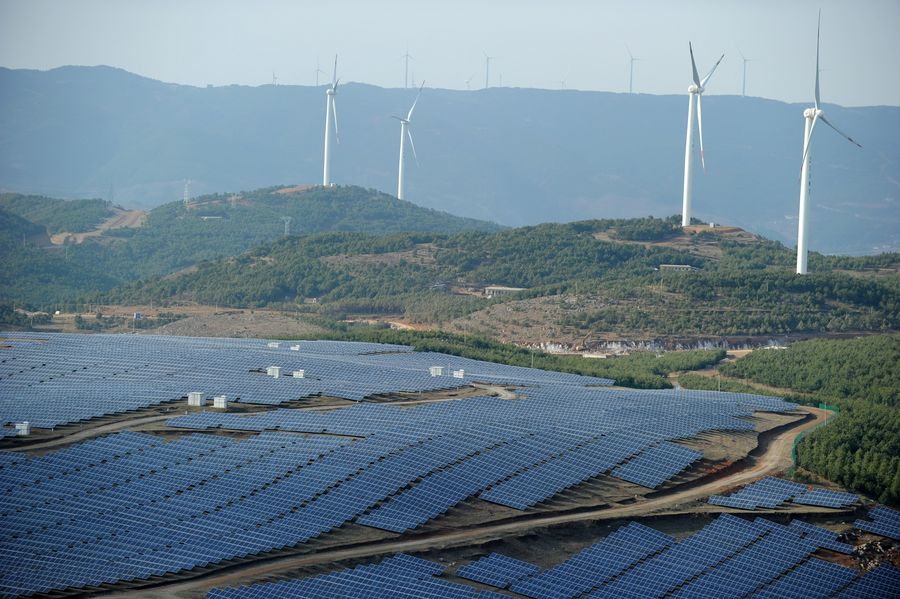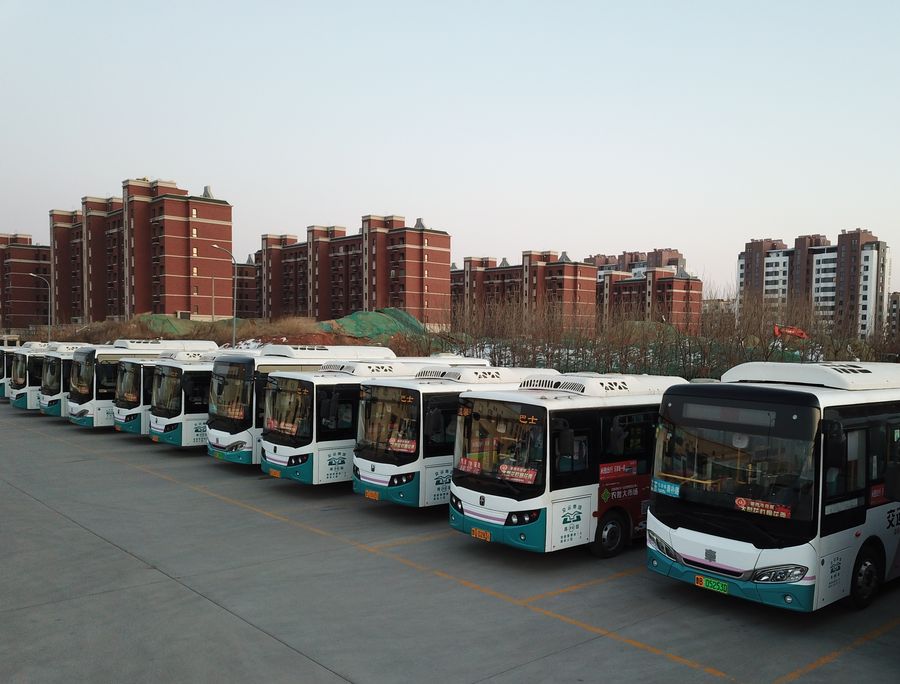Pursuing green development, China endeavors to protect Earth
Amid the global COVID-19 pandemic, the world is marking Earth Day on Wednesday, reminding people of the many challenges facing humanity such as climate change, desertification and pollution.
Earth Day, which falls on April 22 annually, aims to raise public awareness about the environment and calls for people to protect Earth with action.
Pursuing green, low-carbon and innovation-driven development, China has been contributing a lot to protecting the planet with its comprehensive efforts in fields like afforestation, energy conservation, advancing technologies as well as international cooperation.

Photo taken on July 28, 2018 shows the scenery of the Saihanba State Forest Park in Chengde, north China's Hebei Province. (Photo by Chen Xiaodong/Xinhua)
GREENING EARTH
Regarding lucid waters and lush mountains as invaluable assets, China has made new strides in advancing afforestation in recent years, with its forest coverage rate growing from about 8 percent in the early days of the People's Republic of China to nearly 23 percent in 2019.
China's contribution to the global greening efforts comes in large part from its long-term afforestation plan.
Chen Youlin, a 63-year-old Beijing resident, is strolling through an urban forest park built in 2018 near the Beijing Workers' Stadium. "When I was a child, this place was a wasteland," he said.
A greening campaign in Beijing from 2012 to 2015 saw more than 54 million trees planted. The capital will continue building 41 urban leisure parks, 13 urban forest parks and 50 small parks and green areas this year.
On April 10, the National Energy Administration published a draft of the national energy law to solicit public opinions. The draft includes such articles as energy strategy and planning, energy development, energy market and energy security, among others.

Photo taken on March 13, 2018 shows the Pingjing photovoltaic (PV) power station and Dahaizi wind power station in Weining County, southwest China's Guizhou Province. (Xinhua/Li Xin)
The top-level design for China's energy transformation is becoming clear with the legislative progress on the energy law, said Li Junfeng, a senior expert on climate change with the China Energy Research Society.
"Coping with climate change has promoted technological innovation and change in the energy field. The optimization of energy structure and the transformation of energy development, in turn, have promoted the in-depth development of the global response to climate change," he said.
China has vowed to step up efforts to establish a legal and policy framework that promotes green production and consumption and build a sound economic structure that facilitates green, low-carbon, and circular development. The country encourages conservation across the board, promotes recycling and aims to build an energy sector that is clean, low-carbon, safe and efficient.
By 2018, China had slashed its carbon intensity, or the amount of carbon emissions per unit of GDP, by 45.8 percent from 2005 levels. It has committed itself to further reducing the carbon intensity by 60 percent to 65 percent by 2030.
In 2019, the country generated 2.04 trillion kWh of electricity from renewable energy sources, which accounted for 27.9 percent of the total electricity output, up 1.2 percentage points from the previous year, data from the National Energy Administration show.
China launched the pilot carbon trading markets in 2011. Official statistics show that by the end of October 2019, a total of 347 million tonnes of carbon dioxide equivalence had been traded in pilot region markets, with an aggregate trading volume of 7.68 billion yuan (about 1.08 billion U.S. dollars).

Aerial photo taken on Jan. 14, 2020 shows the electric buses in Laixi County of Qingdao, east China's Shandong Province. (Xinhua/Ding Hongfa)
Wang Yao, president of the International Institute of Green Finance at the Central University of Finance and Economics in Beijing, said green finance tools such as green bonds, green credit and green insurance have played a boosting role in dealing with and solving climate change problems and promoting global climate governance.
Climate investment and financing can effectively use the cooperation mechanism between public and social capital, attract social capital to renewable energy industries such as photovoltaic power generation and wind power through the guidance and demonstration of public funds, and achieve the goal of optimizing the energy structure, she said.
PROTECTING BLUE OCEAN
Globally, some 300 million tonnes of plastic waste is generated every year, and a staggering 8 million tonnes of plastic end up in the world's oceans, according to a United Nations report.
In recent years, China has continued its research and study on microplastic pollution which can kill marine life and enter the human food chain.
Researchers found microplastics in 22 types of corals and 80 percent of fish samples in a survey around the Nansha Islands in the South China Sea, according to Sun Chengjun, a researcher from the First Institute of Oceanography under the Ministry of Natural Resources.
In a research expedition, scientists on the oceanographic research vessel Xiangyanghong 01 collected nearly 1,000 seawater samples and found that microplastics widely exist in all oceans and even in the waters in the south polar region.

A diving instructor checks the growth of corals in the sea at the Fenjiezhou Island scenic area in Lingshui Li Autonomous County, south China's Hainan Province, Nov. 18, 2018. (Xinhua/Yang Guanyu)
"The microplastics are tiny and light and can flow into the oceans. They are ubiquitous," Sun said.
To conserve the environment, China has adopted measures including massive tree-planting and coral restoration campaigns, clamping down on illegal wastewater discharge, treating polluted rivers and launching public education activities.
Starting from April, China launched an eight-month-long special law enforcement campaign, coded "Blue Sea 2020," to enhance marine environmental protection.
It will target violations of laws and regulations in eight fields, including marine and coastal project construction, offshore oil exploration and exploitation, marine dumping, and sea sand mining and transportation.
Editor: John Li